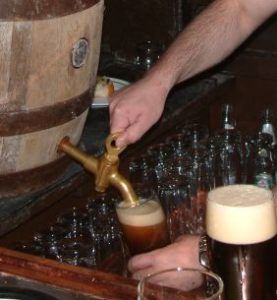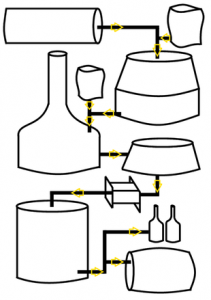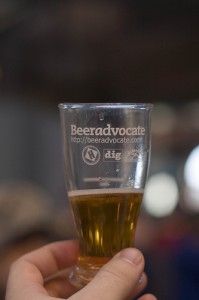Brews You Can Use

B is for Beer
A new children's book about beer (inspired by this cartoon). Actually, it's a children's book for adults, or at least those who have attained majority age, even if their intellectual development hasn't quite kept pace. This link offers the best review I've seen:
Billed as “a children's book for grown-ups” and “a grown-up's book for children,” the adorable illustrated hardback follows young Gracie Perkel's research into how beer is made. Gracie wants to know, “What's that stuff Daddy drinks?”–the stuff that's “yellow and looks like pee-pee.” Uncle Moe, an antiestablishment hippie with an inherent distrust of institutions, shepherds Gracie on her quest. But when he leaves rainy Seattle with the podiatrist he falls in love with, Gracie chugs a cold one, barfs, passes out, and meets the Beer Fairy, who shows her exactly how beer is made.
It's not on my list of "must reads," but if I see it at the local public library, I'll check it out.
Too Much Beer?

Next Thursday is National Homebrew Day. Tomorrow is Big Brew Day, which is apparently an attempt to celebrate homebrewing throughout the world. I liked the National Homebrew Day when I first heard about it. The Big Brew Day treads into the stupid waters, but hey, any excuse to drink.
Aside: Other sources say tomorrow is National Homebrew Day. I'm not sure which one is accurate, but I'm thinkin' it doesn't really matter.

Wikibeer
I've long enjoyed Wikipedia, and I've long enjoyed beer. It never dawned on me that someone may have combined the two . . . producing one outstanding encyclopedia entry. Just a few of the facts you'll learn:
Beer is the world's oldest and most widely consumed alcoholic beverage and the third most popular drink overall after water and tea. . . .
Some of humanity's earliest known writings refer to the production and distribution of beer: the Code of Hammurabi included laws regulating beer and beer parlours, and "The Hymn to Ninkasi," a prayer to the Mesopotamian goddess of beer, served as both a prayer and as a method of remembering the recipe for beer in a culture with few literate people. . . .
Less widely used starch sources [for brewing] include millet, sorghum and cassava root in Africa, potato in Brazil, and agave in Mexico, among others. . . .
Regions have water with different mineral components; as a result, different regions were originally better suited to making certain types of beer, thus giving them a regional character. For example, Dublin has hard water well suited to making stout, such as Guinness; while Pilzen has soft water well suited to making pale lager, such as Pilsner Urquell. The waters of Burton in England contain gypsum, which benefits making pale ale to such a degree that brewers of pale ales will add gypsum to the local water in a process known as Burtonisation. . . .
The most common method of categorising beer is by the behaviour of the yeast used in the fermentation process. In this method, beers using a fast-acting yeast which leaves behind residual sugars are termed "ales", while beers using a slower-acting yeast, fermented at lower temperatures, which removes most of the sugars, leaving a clean, dry beer, are termed "lagers". . . .
Beer ranges from less than 3% alcohol by volume (abv) to almost 30% abv. . . .
The temperature of a beer has an influence on a drinker's experience; warmer temperatures reveal the range of flavours in a beer; however, cooler temperatures are more refreshing. . . .
